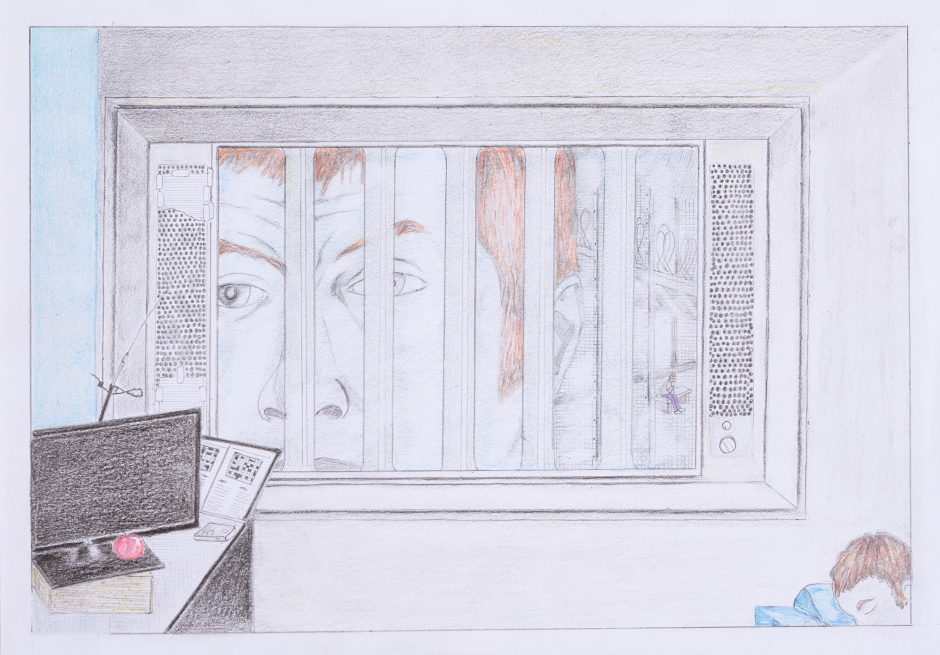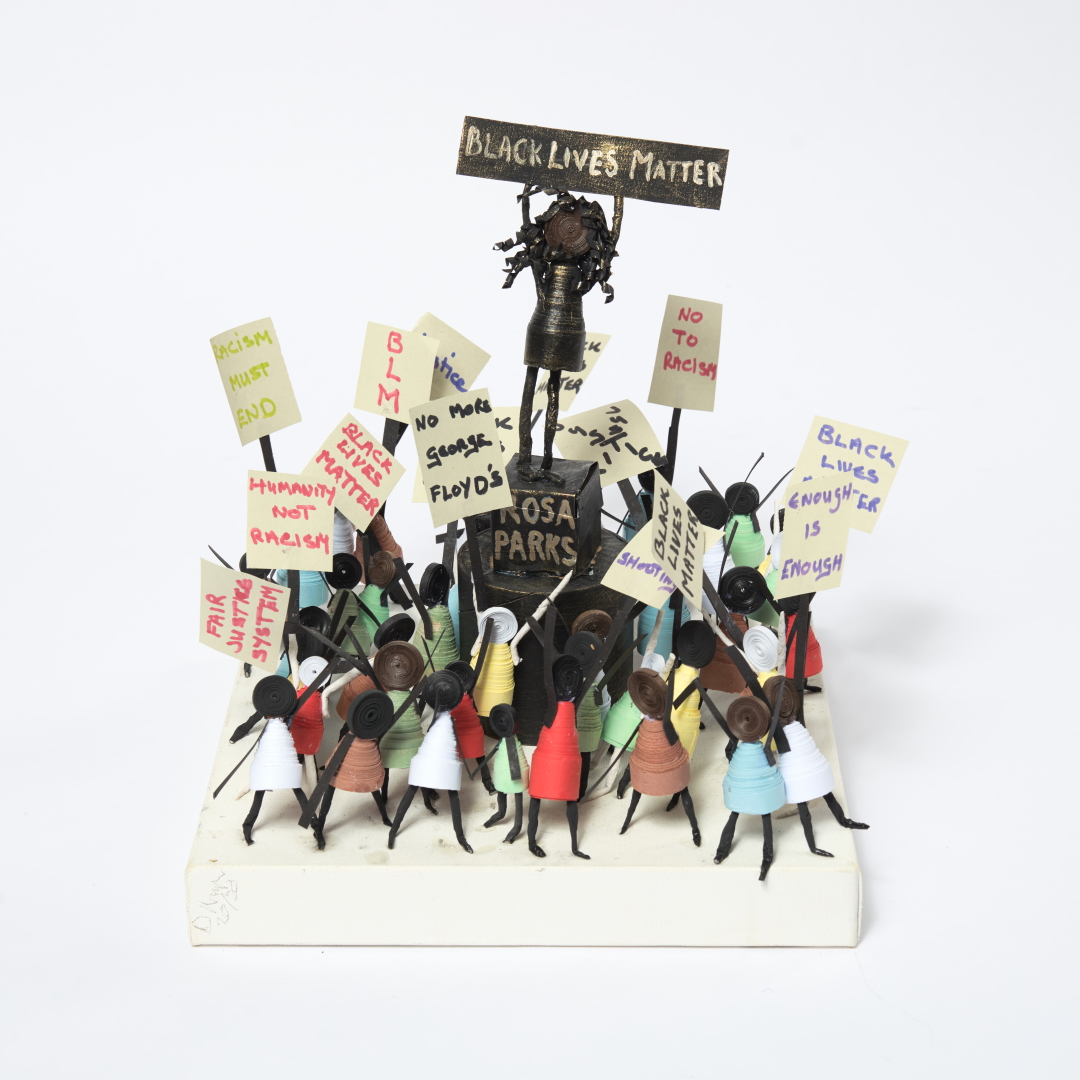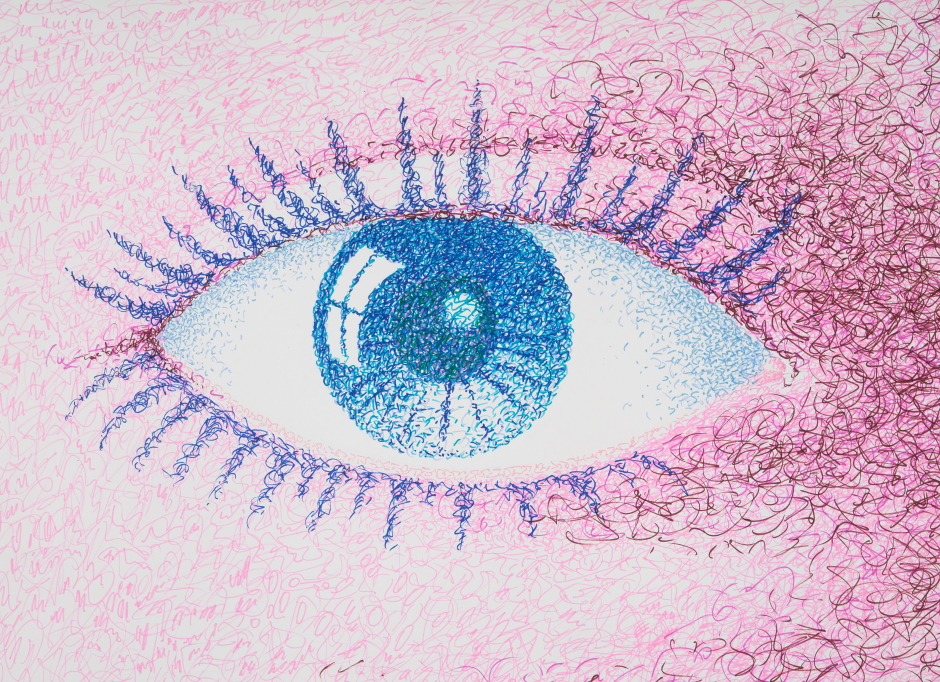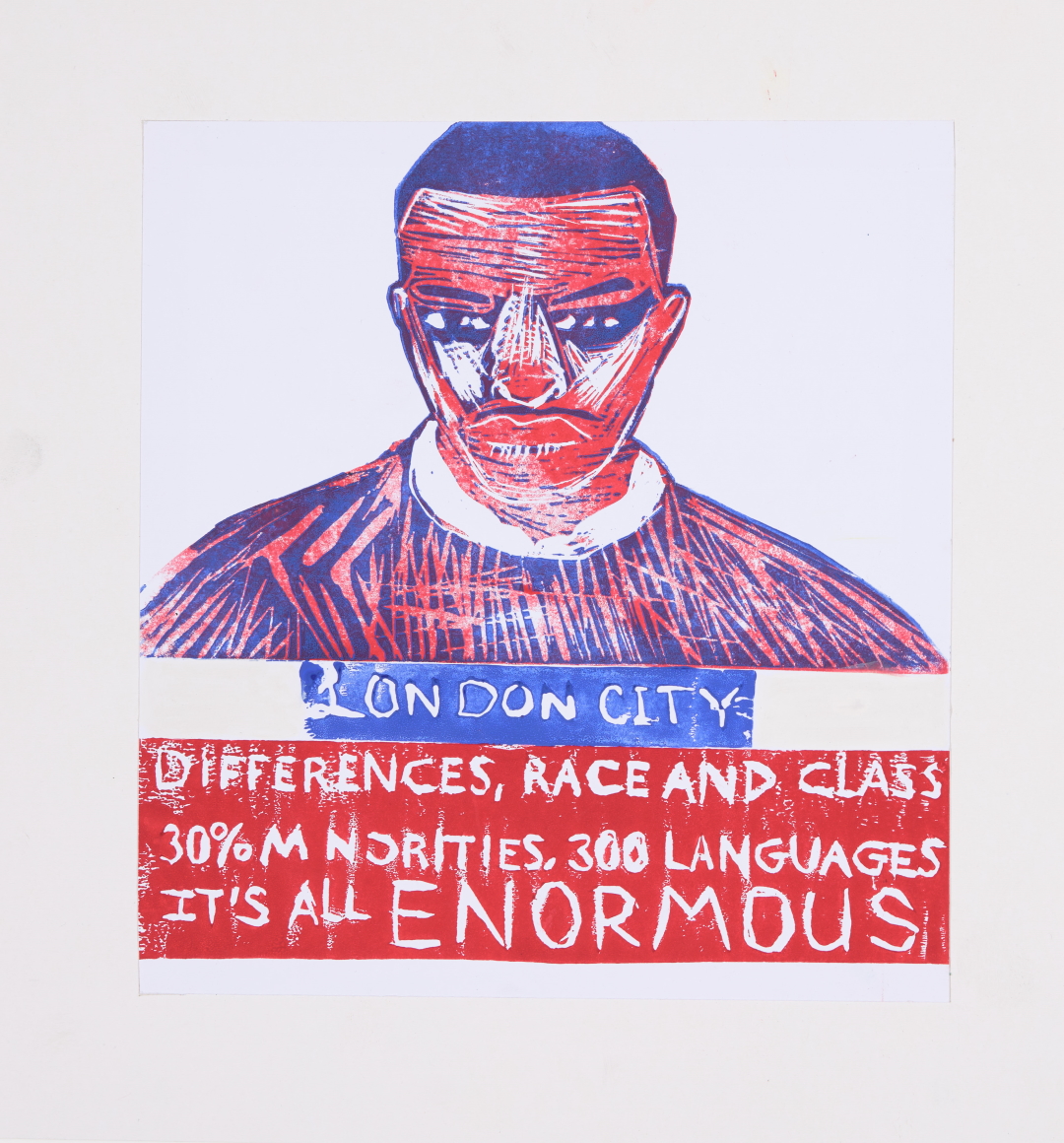Bren O’Callaghan: Who is Lady Unchained?
Brenda Birungi: I am a poet, facilitator, mentor, broadcaster, radio host for National Prison Radio, advocate for life after prison, founder and creative director of Unchained Poetry, which is an artistic platform for artists with lived experience of the criminal justice system.
All of these things that I am have come out of my being sentenced to two and a half years in prison at the age of 21, and realising that anybody can go to jail, regardless of if you’ve got an education or not. If you’ve planned for your future, if you’ve done everything to avoid prison, you can still end up in prison.
During my last arrest, I was in a police station, upset. There was a group of boys there, younger than me, and I remember thinking, ‘I wish I could help you, but how can I when I’m in a cell with you?’ I think that was the wake-up call. Everybody I was seeing coming through the system was getting younger. I thought, I can’t advise them while I’m in a cell with them – I have to advise them when I’m in a different position.
I became all these things to just make sure that other people from my background can see that they can build and be successful in whatever it is that they choose to do, especially if it’s something through the creative arts.
Off the Streets, HM Prison & Young Offender Institution Forest Bank
BO: Tell me a little bit more about Unchained Poetry, which you went on to establish upon release.
BB: When I first set it up, it was a mentoring programme that I wanted to do through poetry. I started having my friends over and exploring what Unchained would be. We would meet up, we’d write together, debate. What are we angry about? What can we do to change it? Unchained was growing, but it wasn’t their lived experience. These friends and others didn’t have convictions, so it was always them asking me about my prison sentence. We weren’t coming at if from the same place.
I carried on emailing people, and National Prison Radio invited me on the show. Slowly, I started to realise that everybody interviewing me had all been to jail. At first it didn’t make sense to me, because I had never met others in my position. I remembered saying to them, “All I’ve been doing is trying to find ex-offenders that wanted to be vocal about their experience, and you have them.” And they’re like, “Yeah, we’ve got loads of them, you can work with us.”
National Prison Radio gave me the platform to actually be able to perform my poetry, so I wanted to make sure that other people got that experience of telling their story and not being judged.
We had our first Unchained Poetry performance nights in 2017, after that it just kept growing. For artists uncomfortable with their own voice, who don’t like hearing themselves or even looking in the mirror, Unchained gives them a family of people with similar lived experience that all want to create better spaces, to be successful legally, and to own their story. We welcome you precisely because of your conviction and show you how you can use it to grow.
BO: What were your thoughts when Koestler Arts approached you with the suggestion that you curate an exhibition for HOME?
BB: To be honest, when I got the email, I closed the laptop and prayed because I didn’t really believe what was happening. I’m not going to lie. I got emotional. I think I took a while to answer, because Fiona [Fiona Curran, Director of Arts at Koestler Arts] reached out to say, “Just so you know, we’re not asking you to apply for this. We want you. We selected you.” I remember saying, “But all I did was go to jail.” People go to school, qualify and study for this role, and my experience comes from being in the darkest place that would have prevented me from ever feeling like I can do jobs like this.
I’m really honoured because everything I do, even when applying for jobs, I would always give 110%. Because if I go into a job, I have to declare that I have a conviction. I don’t want somebody coming after me with a criminal conviction, going for the same job, and they’re like, “Oh, well Brenda was here, and she was rubbish.” I want them to say, “Well, we had Brenda, and Brenda was amazing, so yeah, we’ll try you out, but you’ve got high standards to live up to.”
Even now it still feels like I’m dreaming. Until I see it in the space and it all happens, I won’t believe it, and I probably will cry (laughs).
African Woman with Child, HM Prison Risley, Gold Award
BO: What journey do you want to take the visitor to experience as they encounter the different categories within the exhibition – from A Moment for Self-reflection, to Forest, Animals and Paths?
BB: I want to tell the story of what it takes to be creative in prison, in a facility where your freedom has been taken away. What it takes to be artistic in those places. I had to show everything. You can see the pain, the reflection, that somebody in jail goes through to put this piece of artwork out. It’s pain, it’s anger, it’s reliving scars, reopening wounds and finally finding that healing where you can share this.
Every single piece of artwork, if I could have put it in there, I would have. Because I’ve been to jail and I know how much it takes to put your name on. I know that this is a piece of your heart that you’ve given to some random person who doesn’t even know you. I had to approach it like creating a piece of poetry. What parts go together? What parts flow really well together and tell the story I need it to tell?
I cannot say it was easy. I was looking at each piece of artwork like I studied art. What do you think they are saying here?
It starts with Self-reflection. In that closed space, you’re thinking, ‘How did I get here? What am I going to do?’ It’s the bars, the darkness. In jail there’s all these gates and you have no keys, but you’re still trying to manoeuvre through it. It’s like being in a jungle or running through a forest, only you don’t know where you’re going. The animals speak of trying to figure out who you are. Am I bird? Will I fly free? Or am I a lion? Am I going to fight through to the end of this sentence?
BO: Tell us more about the Black History Dedication section.
BB: When we started thinking about themes, I definitely want to do something dedicated to Black people. Black History Month is like saying that we’re only allowed as Black people one month to celebrate ourselves. So, let’s call it ‘Black History Dedication’, because I am Black every single day.
I figured that if I didn’t have Black History Dedication in talking about the prison or criminal justice system, I’d be lying, because the prison system is made up so many Black people. I think for me when I was in jail, there were a lot of people I looked up to, like Maya Angelou and Nelson Mandela. There were moments when I thought, ‘Whoa, Nelson Mandela went to jail and he became President. I have to do better’. Maybe there’s somebody in jail that is still confused, and they just need to be reminded of the Black people that have overcome some of these things.
All Stand Together, HM Prison Send, Transformation Commended Award for Sculpture
BO: Is there any particular work in the show that resonates strongly with your own experience?
BB: Before I went to jail, I only saw myself as the Black British girl. Everybody knew I was African, I knew I was African, but I wouldn’t really talk about Africa. I wouldn’t explore that. When I went to prison, I was forced to embrace my African roots because I was threatened with deportation.
There is a picture in the exhibition that shows a woman holding her baby on her back with a wrap, which for me used to represent poverty. But in this image the woman looks happy, her clothes are not torn, the baby is secure. It got to me, because when I used to see images like that, it brought up my younger side, when I would stick my nose up and look down at stuff like Comic Relief.
I would think, why do they do that? Why don’t they hold their baby properly? So I really wanted that image, because I thought what if there’s a little Black girl that’s growing up, and the only things that she’s seen about Africa is the negative side? That picture, from the moment I saw it, I wanted it in the show. It’s for me.
BO: When you’re in school, or perhaps prison, some educational subjects are deemed to have more worth than others, and art subjects are typically very low on that list. Speaking from personal experience and your knowledge of others, what it is that creative expression can achieve that studying maths or English or another qualification doesn’t bring, or nourish?
BB: When it comes to talking about criminal justice, my criminal conviction or my time in prison, I don’t know if I will be able to just tell my story normally. With poetry I had the power to explore all my emotions, before I even performed for others. Whereas usually you don’t get that opportunity. If you’re asked a question and you answer straight away, you don’t get the option to think it through.
With creative writing or drawing, you can explore things that your mouth or your mind might not have the words to say.
Art, poetry and creativiy gives you an outlet that you didn’t know you needed until you start doing it. You’re healing yourself, without even knowing it. I think it’s so important to have this in places like prisons and exclusion centres. Places where young people are there because of some form of abuse that they will never express. I’ve found from Prison Radio and my show Free Flow, I’ve had young people write in sharing things that, had they shared a few years ago, maybe they wouldn’t be in jail. But now they’re sharing it with me, on a radio show, because it’s the only way that they can express it, because they’re now being told that they’re allowed to express it.
Let’s try and help people be able to express these feelings and explore these emotions before a conviction, or being sectioned, so that they can try and understand why they feel the way they feel. I wish I’d known all of this before jail, but luckily, I know it now, I can just pass it on.
Window, Kemple View, Julia Rogerson Highly Commended Award for Drawing
BO: How might a visitor to the gallery at HOME be a better ally for artists in the show?
BB: I want to open people’s eyes to prisons in particular, but also the people in prison. I can honestly say that before jail, I was the same. I would say, they committed a crime, they should be there. I was in this bubble, because I had never committed a crime, I’d never been involved in the criminal justice system personally, for me to feel or understand what it is when you are in that system.
I need them to understand that there are people just like me and them in jail. We are all one step away from a prison sentence, one step. You can make a mistake tomorrow that can end up with you in jail. You might have not planned to make that mistake. You might have just trusted the wrong person. I need them to understand that people behind bars are human, they have a soul, they have a beating heart. They have guilt. A lot of people are in jail because they trusted the wrong person, or went through something, say for example, a form of abuse that went unreported. Yet when they’re in front of a judge, they’re not going to bring that up and say, “Oh, by the way, I was abused at this age, and then from then I started using drugs.”
Sometimes people that have not been to jail or not had a family member or loved one in prison, need to see and hear somebody that looks or sounds like them, in order to understand. There are people in jail that firstly shouldn’t be in there because of their mental health issues, or there are people in mental health units that shouldn’t be in there, because they needed support before they even got to that place.
I wish I’d opened my eyes a bit more before prison, I was too critical of everybody that had been to prison. I was judgemental towards anybody willing to commit a crime, but then I ended up in the system myself. Fortunately for me, I made it out alive. When we present Self-reflection within the exhibition, Forest, Animals and Paths, the Texts and Black History Dedication, there’s a lot of people in the criminal justice system that after the reflection stage don’t make it any further. They don’t reach paths home. We need to understand why that’s happening.
If prison is a place where people are being looked after, then why is it that just on the self-reflection level, you can lose your life? Let’s open our eyes, our hearts and our ears, and really understand what it takes for a person to complete a full sentence, and then even be creative while they’re in there. It takes so much. If we can just look into this artwork and see, not just a picture, not just the words, but see the person behind it, then maybe we’ll start to understand that these people in prison, people like me, need the support way before they get to that point.
BO: Although a selection of tracks by female musicians in prison plays out within the gallery, there is a further Soundcloud playlist, accessible on the HOME website. Why would you urge visitors to access this?
BB: As females, especially in the criminal justice system, I don’t think we get recognised enough. You don’t really hear us, because there’s so much to our stories that we don’t want the public to know, we don’t want the public to see. Being seen, visibly, is hard. So, it’s amazing that most of the songs are from women, because they don’t want to publicly be seen, but they want to be heard. And if we allow them to be heard, then slowly they will start to understand that it’s okay for them to be seen as well. By hearing the music, you’re reasurring those women, it’s okay, we can’t see you right now, but we can hear you, and we want to see you and hear you properly together as a whole.
I think for me, the music also brought the mothering role when you’re in jail. The elder women would say, “Don’t worry. Don’t worry my daughter, it’s going to be okay. Don’t worry young girl, don’t worry young one.” They look out for each other. It’s interesting, because I feel in the outside world, women are still trying to figure out how to work together, but then in jail we work together very well. It’s quite funny actually, because I never really used to think that. But the music brought the element of women, showing what women actually sound like, their amazing voices that come from behind those walls, but also the emotions in the delivery of the music.
I hope that people hear it and see it, and actually understand that each of those women represents me, represents every single other woman that’s been through the criminal justice system, and hopefully allows everybody else to hear the same emotion that I heard in each piece.
Soul Journey to Truth is exhibiting at HOME Mon 17 May – Sun 6 Jun. Admission is free, but tickets should be booked in advance.
Lead image credit: Brenda Pilston




